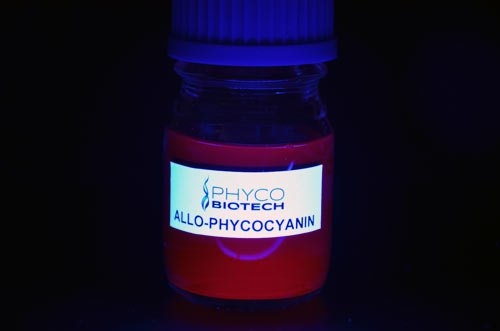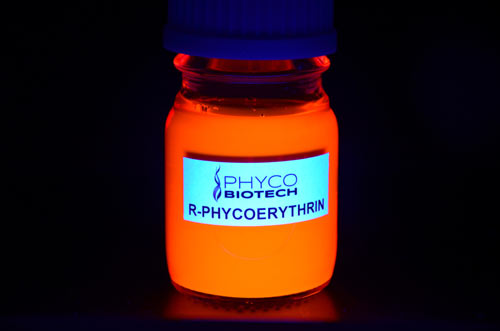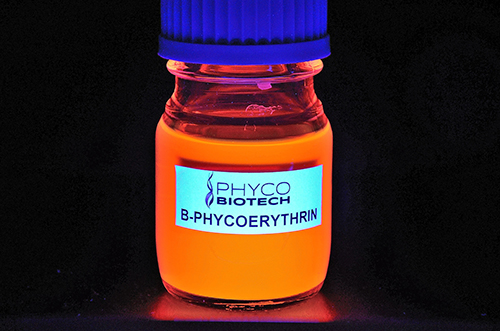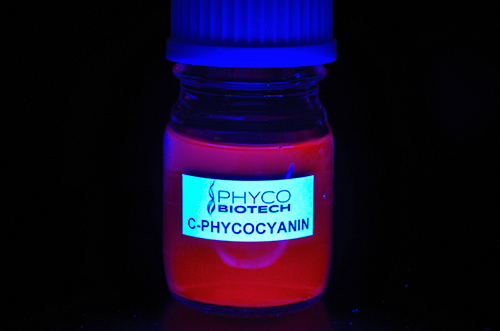Phycobiliprotéines
Les phycobiliprotéines sont des polymères naturels de protéines trouvées dans les cyanobactéries, les algues rouges eucaryotes et les cryptophytes où ils sont les pigments accessoires de la photosynthèse. Au sein de l’algue, elles sont regroupées en paquets de phycobiliprotéines organisées autour d’architectures nommées phycobilisomes, les complexes collecteurs d’énergie lumineuse.
Nous produisons quatre types de phycobiliprotéines : APC & APC XL, C-PC, R-PE, B-PE. Afin de répondre parfaitement aux besoins de nos clients, nous proposons ces phycobiliprotéines sous forme précipitée et sous forme lyophilisée. Cette dernière présente de nombreux avantages comme son aptitude à être directement soluble dans le tampon tout en préservant les propriétés spectrales des pigments.
Avantages de nos phycobiliprotéines en tant que marqueurs fluorescents
- coefficient d’absorption spécifique et rendement quantique élevés
- Décalages de Stokes important
- 100% hydrosolubles
- Stables dans une large gamme de ph (5 à 8)
- Couplage avec des composés organiques tels que les anticorps et autres protéines par les procédures chimiques conventionnelles, sans modification de leur propriétés spectrales
- Excitation par les laser classiques tels que l’hélium-néon, krypton ou l’argon.
NOS PHYCOBILIPROTÉINES

ALLOPHYCOCYANINE
Notre APC est une protéine polymérique naturelle, isolée de la cyanobactérie Spirulina sp., cultivée au sein de nos installations. Organisée au sein d’une architecture appelée phycobilisomes, l’APC constitue un pigment accessoire de la photosynthèse en complément de la chlorophylle.


ALLOPHYCOCYANINE XL
Notre APC est une protéine polymérique naturelle, isolée de la cyanobactérie Spirulina sp., cultivée au sein de nos installations. Organisée au sein d’une architecture appelée phycobilisomes, l’APC constitue un pigment accessoire de la photosynthèse en complément de la chlorophylle.


PHYCOERYTHRINE-R
Notre Phycoérythrine-R (R-PE) est extraite d’algue rouge.
Disponible sous deux formes.


PHYCOERYTHRINE-B
Notre Phycoérythrine-B (B-PE) est extraite de Porphyridium centrum.
Disponible sous deux formes.


C-PHYCOCYANINE
Notre Phycocyanine (C-PC) est extraite de la spiruline (Arthrospira Platensis) produite par nos soins en France.
Disponible sous deux formes.
Nos clients













